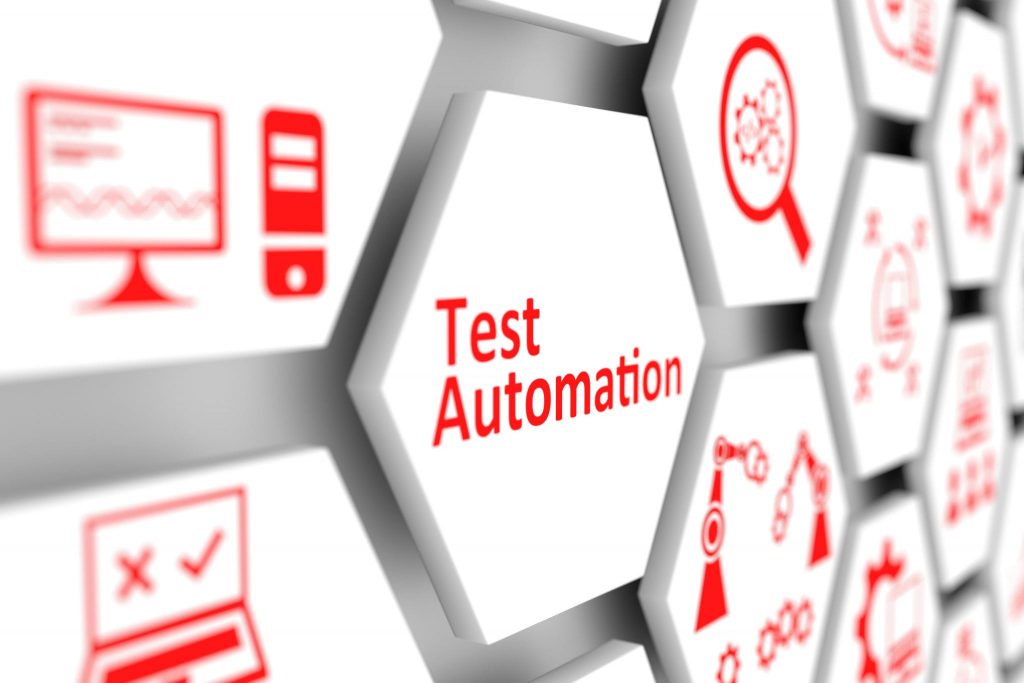Manual testing has traditionally been the norm in the software quality testing landscape for the last few decades. Recently, there has been a noticeable shift towards automated testing methodologies, promising greater efficiency and cost-effectiveness in the long run.
As the demand for much faster and more reliable testing practices surges, understanding the concept of test automation return on investment (ROI) conquers the fear of losing out while strengthening confidence in implementation. Automated testing accelerates the testing process and streamlines business operations, offering a way to improve productivity and reduce costs simultaneously. However, to comprehensively tackle the benefits of test automation, calculating its ROI is just as important.
In this blog, we’ll explore the fundamentals of ROI, different methodologies for calculating test automation ROI, and the critical factors that require extra attention during the evaluation process. Let’s embark on this journey to unlock the true potential of test automation ROI on your business.
What is the ROI of Test Automation?
Relevant Software states that Test Automation ROI is a metric providing a numerical representation of the returns achievable by integrating an automation strategy into QA workflows. ROI is an essential concept in the realm of test automation and helps in the following:
- Comprehend the financial implications, both positive and negative, resulting from the implementation of automation within your business.
- Estimate the expected timeframe for the investment to yield returns.
- Offer a clear perspective on the potential gains and losses linked with the decision to invest in automation.
- Act as a strategic indicator in seeking support from potential investors for further business development and investment.
Generally, calculating the ROI figure entails a specific process by deducting the estimated costs from the projected benefits, dividing the resultant amount by the expenses, and then multiplying it by 100 (We’ll be going into details on this calculation in the later section, or feel free to jump right onto it “Ways to Measure ROI Test Automation”).
This process yields a percentage figure representing the anticipated return on adopting test automation. Savings primarily refer to the amount acquired by substituting manual and automated tests. On the other hand, costs encapsulate the investment associated with developing tests and establishing the test environment.
Expressing both the benefits and costs in units of money or time is feasible, as these aspects can be measured in various ways:
- Savings stemming from automation.
- Reduce financial risks attributed to automation, such as the expenses associated with troubleshooting after the release of a faulty product.
- Time saved by automating tasks.
- Cost savings related to the salaries that would otherwise be paid to staff conducting manual tests.
On the other hand, costs can be gauged by considering various factors such as:
- The financial investment in adopting automation includes establishing an automation team or utilizing third-party testing services.
- The duration required to create and implement automated tests.
- Expenditures related to the upkeep and enhancement of the testing environment.
Key Metrics to Prioritize before Computing Test Automation ROI
Here are a few significant metrics to consider before assessing the ROI of test automation:
1. Cost
The business cost is a significant factor driving the shift from manual to automated testing. While the initial setup and installation of automation tools may take time to reflect cost benefits, it becomes a crucial metric in the long run.
2. Time
Even if you have a team of skilled testers, if they spend a significant amount of time on manual test case creation and execution, it can be a substantial loss for SMEs. Time is a valuable resource, and reducing the time spent on repetitive tasks allows teams to focus on essential business operations, making time a critical metric in ROI assessment.
3. Quality
Quality is an underrated metric in ROI calculation for test automation. If automated testing consistently delivers error-free products in a shorter time frame, it contributes significantly to ROI. Automation minimizes the possibility of human error, streamlines repetitive tasks, and enhances overall product quality, leading to improved customer satisfaction.
Ways to Measure ROI Test Automation
Methods for measuring ROI on test automation encompass fundamental calculations revealing time saved by substituting manual testing with automated processes and more intricate assessments based on efficiency enhancements and risk mitigation.
Basic ROI calculation
One of the easiest ways to measure Return on Investment (ROI) involves assessing the time saved by implementing automated tests compared to conducting manual tests within a specific timeframe.
For instance, it takes around 250 hours to create automated tests for a software application (e.g., quoting software designed for small businesses). Utilizing such automated tests could save approximately 20 hours per week on manual testing. Consequently, the initial time invested in automation could be recovered in about 13 weeks.
ROI can also be evaluated in monetary terms by multiplying the time values by the hourly rates of developers and manual testers over a designated assessment period. Assuming developers receive double the hourly rate of manual testers, switching to automated testing may result in cost savings after approximately 26 weeks.
However, this calculation is a simplified representation. For a more accurate evaluation, several other factors should be considered. These factors could encompass the time spent on maintaining and updating automated tests, the time saved by eliminating errors found in manual testing, or the efficiency gained through large-scale automated testing.
Calculation of Efficiency of ROI
A more advanced approach involves the efficiency ROI calculation, focusing on time investment gains. In this case, the investment and cost that go into the ROI formula are defined as follows:
Investment = Automated test script development time + Automated test script execution time + Automated test analysis time + Automated test maintenance time + Manual test case execution time
Gain = Manual test execution time or analysis time * Total number of test cases (automation + manual) * Period of ROI / 8
However, it’s important to note that this approach is based on certain assumptions, such as the complete replacement of manual testing by test automation and the requirement of only one tester for manual testing. As these assumptions are seldom met in real-world scenarios, this calculation should be treated as a preliminary estimate rather than a definitive assessment.
Risk Reduction ROI Calculation
The ROI calculation employs this formula:
ROI = (Decrease in financial risk – Cost of risk control) / Cost of risk control
The decrease in financial risk is determined by subtracting the annual risk occurrence rate from the cost of risk control and dividing the outcome by the cost of risk control. In this context, the gain represents the decreased financial risk of not adopting automation technology. This assumption is grounded on the notion that manual testers are more prone to errors.
ROI Calculation – Other Things to Consider
Consider the additional variables that might impact your computations regardless of the method. For instance, the automation of specific processes can have implications for other operations, which should be factored in. For example, automating the generation of test reports can diminish the time and expenses linked to producing QA documentation.
Moreover, not all tests are suitable for or require automation. It’s crucial to apply automation where it can yield substantial benefits particularly. This means that manual testing would persist in other scenarios, requiring the retention of some manual testing personnel. If this is the case, adjustments to your calculations become necessary.
Certain tests can be recycled, further cutting costs in your procedures. Consider the advantages derived from automating regression tests. Recognizing that automated tests are notably more precise than manual ones, it’s plausible to anticipate that embracing automated testing can spare you the expense of rectifying overlooked bugs.
Ensuring the accuracy of ROI calculations
You are right if you have already concluded that calculating ROI for test automation projects is complex, but the complexities do not end here. Before you approach the task, it’s essential to be mindful of certain nuanced factors that can impact the precision of your calculations.
Firstly, assigning a monetary value to certain aspects crucial for your calculations—like the expenses saved from preventing errors through automated testing, enhanced credibility of websites, or improved product quality—might be challenging.
Secondly, certain variables are subject to change over time, sometimes in unforeseen ways. This includes costs for accessing third-party simulators/emulators/real devices or maintaining and training a testing team.
Last but not least, it’s important to note that automated testing doesn’t ensure absolute accuracy. At times, bugs may slip through and necessitate troubleshooting. Adopting automation doesn’t nullify the need for a testing team; you’ll still require a dedicated team to manage automated tests, occasionally relying on manual testers, too.
Tips to Improve ROI Test Automation
Don’t simply implement test automation and wait for ROI to materialize. Instead, increase your chances of enhancing test automation ROI by incorporating these tips:
What to Automate?
While automation offers significant benefits, indiscriminate automation is a futile expenditure of time and resources. Thoughtfully assess and decide which tasks truly warrant automation. This strategic approach ensures that your investments in tools and systems align with actionable goals, contributing meaningfully to your business ROI while saving time and costs.
Use Standard Test Automation Tools and Frameworks
Although customization offers advantages, opting for industry-standard test automation tools and frameworks is essential to adhere to regional rules and regulations. This approach aligns with compliance requirements and guarantees that your product meets the collective expectations of users and stakeholders.
Prioritize the Right Tasks
If you have five test cases to automate, ensure you run the one lined up as the highest priority first. Automating and executing these cases randomly could affect your ROI, especially if delays occur in releasing critical features anticipated by users.
Create Testable Products
Switching from manual to automation will not work if your end product is untestable. Aim to create testable applications with each new concept and release, providing an opportunity for automation tools to validate their functionality.
Prepare Reusable Test Cases
Automation is designed for crafting reusable test cases, enabling QA engineers to spend less time repeatedly executing the same tests. This time efficiency allows them to focus on generating new test cases and assessing various facets of the product. Such a shift directly influences the ROI of test automation by channeling essential business resources more effectively.
Conclusion
Quantifying the ROI of test automation might appear intricate. It necessitates thoroughly examining your business, product dynamics, testing requisites, and procedural intricacies. You must opt for a sustainable and feasible calculation method, scrutinize relevant parameters, and consider additional variables that could influence the outcome.
Nevertheless, a precise execution yields a valuable metric. It aids in assessing the anticipated returns associated with adopting automated testing, empowering informed decisions on investing in this technology. Investing in automation tools, whether CRM services or test automation, demands a meticulous and professional evaluation of its impact on a company’s productivity and financial landscape. If you still need to figure out where to start, contact the Shift Asia support team for further assistance.
ContactContact
Stay in touch with Us










